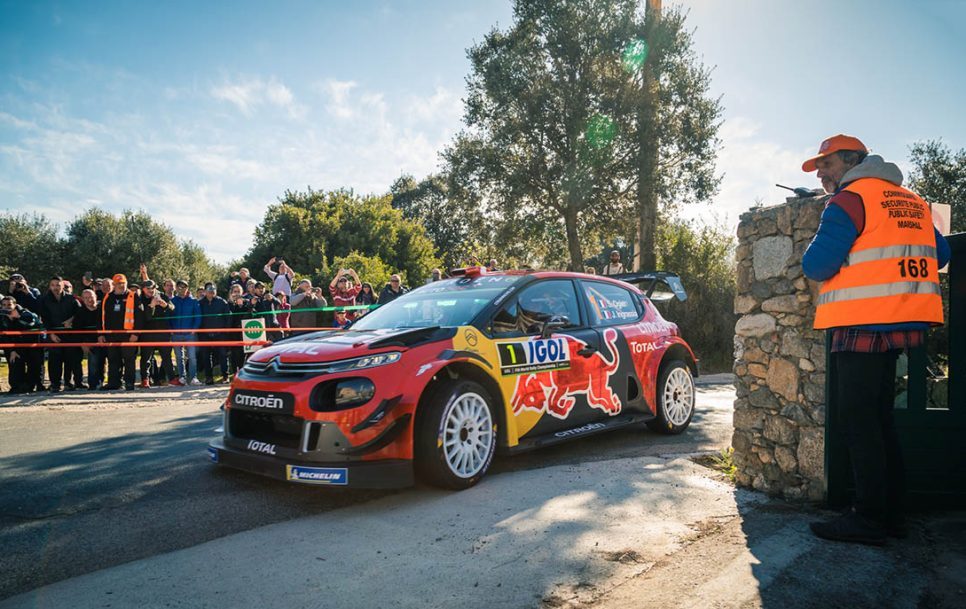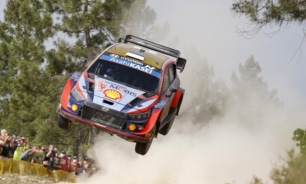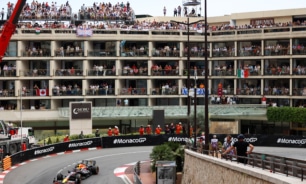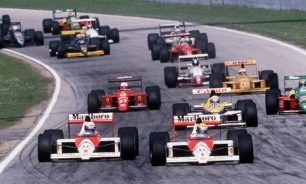Can Sebastien Ogier win the WRC title from home?
After three rounds of the WRC 2023 calendar, eight-time world champion Sebastien Ogier is once again at the top of the standings. It remains to be seen whether – and how – he will fight for his ninth championship.
The situation is a bit farcical. Based on what we have seen this season, Ogier is still the most complete driver around; after Monte Carlo, Sweden, and Mexico, he leads the series with 56 points. The Frenchman, however, was absent from the snowy roads of Scandinavia. That was the plan all along.
After winning his eighth WRC title in 2021, Ogier, who had flirted with retirement before, quit the full-time program. Last year it made perfect sense, he competed in six rallies but was never in contention: after a strong showing in Monte, he retired in Portugal, and a puncture left him fourth in Kenya. His sole win came in Catalunya, the penultimate round of the season.
This year, Ogier has contested two rallies and collected 56 out of the 60 points available for him. He will be first on the road in Croatia too, an asphalt rally he won in 2021. Not too bad. The problem is that, according to multiple sources, he has a contract for just seven rallies in 2023.
But there are 13 of them on the calendar, and his rivals will be present everywhere. Thierry Neuville of Hyundai, so often second to Ogier, is there once again with 53 points, while reigning champion and Ogier’s team-mate Kalle Rovanperä holds third with 52 points. 2019 world champion Ott Tänak, now leading the charge for M-Sport, and another Toyota driver Elfyn Evans remain in the mix too with 47 and 44 points, respectively.
The math behind it
If Ogier remains true to his word and lines up just five more times, his championship chances are almost non-existent. So far he has earned 28 points per rally (PPR for further reference) and, even if he would be able to continue with a near-perfect record, that would amount to 196 points.
His rivals are better off at this point. Neuville’s PPR is roughly 17.6, amounting to 229.6 in total while Rovanperä and Tänak would also finish ahead of Ogier. Even if the eight-time champion would be flawless from here on out, collecting a maximum of 30 points five times, he would still end up with just 206.
But then one has to consider the variables. Esapekka Lappi, Neuville’s team-mate, was competitive in both Sweden and Mexico but crashed. Hyundai’s part-timer Craig Breen finished second in Sweden, taking points off contenders. Dani Sordo, Takamoto Katsuta, and Pierre-Louis Loubet have the potential to surprise here or there.
M-Sport meanwhile has publicly pondered whether to offer a drive for the only man leading Ogier historically in almost every category – nine-time world champion Sebastien Loeb. Although 50 next February, Loeb has not lost his knack, proven by his competitiveness in a part-time program with the Puma last season.
The history behind it
Maybe we should look at the numbers from another angle then. In theory, one driver could have collected 390 points in 2023; should Ogier finish with 196, he would have 50.3 percent of the total. Has that ever been enough for a title?
Before 1997, Ogier would have had a blast as only a certain number of rallies counted towards the championship standings so drivers could hand-pick them. Walter Röhrl, the world champion in 1980 and 1982, is considered to be one of the all-time greatest despite never contesting Rally Finland for example.
But for our purposes, seasons before 1997 are therefore irrelevant and any analysis must be based on the 26 seasons since. If the criteria is scoring more points than the second-placed driver, 50.3 percent would have been enough for the title ten times. If we move the needle by requesting the beating of the champion, just five years match the pattern – and with reason.
They all happened between 1997 and 2001 when just six drivers were awarded points in a 10-6-4-3-2-1 system. While winning was rewarded kindly, finishing second meant just a 60 percent haul of the winner’s points; between 2003 and 2010, when a 10-8-6-5-4-3-2-1 system was used, the same number was 80 percent, and with the current 25-18-15-12-10-8-6-4-2-1 system, it has been adjusted to 72 percent.
Four out of the five other seasons can be rationalized too. The common denominator for 2005, 2013, 2015, and 2016 is a dominating champion, with Loeb collecting 79.4 percent of all points in 2005, while Ogier racked up 79.7, 72.3, and 73.6 percent in his three title-winning seasons. The competition was far, far behind.
The hope behind it
That leaves us with 2002, the season Marcus Grönholm won his second championship by collecting 55 percent of the points. His nearest competitor Petter Solberg managed just 26.4 percent, seven different drivers won a round, and a staggering twelve achieved a podium finish that year. For the same to happen in 2023 would be close to a miracle.
Only twice has a driver won the championship while not earning points from six rallies, and 2001 was one of those outliers. The title fight was wide open: 14 rallies produced eight different winners and 14 different top-three finishers, with Richard Burns triumphing despite a solitary victory and just 31.4 percent of available points.
The other time it happened, the season consisted of 13 events. In 1998, Tommi Mäkinen retired six times, but won five and finished third twice. From those seven rallies, Mäkinen collected 82.9 percent of points. He still needed a slice of luck though, with Carlos Sainz’s Toyota breaking down approximately 300 meters from the finishing line in the final stage of the final rally, thus handing the title to the Finn.
Mäkinen’s 82.9 percent haul is impressive, but Ogier needs to do even better – with 28 PPR and 196 out of a possible 210 points, he would finish at 93.3 percent. A ridiculous number for everyone in WRC history not named Sebastien Loeb.
In 2010, the Frenchman completed a 13-rally season without a single non-points finish; he had eight wins, twelve podiums, and 84.9 percent of the points. He was even better in a 15-rally season in 2008 – despite two blips, he accumulated 81.3 percent in total and 93.8 percent in the rallies that he did finish.
The closest to Ogier in 2023 would be Loeb’s 2006 season, however. From the first twelve rallies, Loeb amassed 112 points out of 120, meaning exactly 93.3 percent; he then injured his hand in a mountain-biking accident and had to miss the last four rallies, but prevailed to win the title.
* * *
For Ogier to win the 2023 title as a part-time driver, things certainly have to come together. He has to continue being almost perfect, while the rest of the pack needs to be as inconsistent as possible.
Craig Breen’s first win? Sure, he can do it.
Esapekka Lappi joining the championship conversation? Yes, please.
A return for Sebastien Loeb? Well, as long as he is second to Ogier.
Croatia will be vital. If Ogier continues the hot streak, he can sit out Portugal and Sardinia. Return in Kenya to win again. Sit out Estonia and Finland. See how it goes from there, with Greece, Chile, a new Central European Rally, and Japan completing the calendar.
With Ogier so dominant in Monte Carlo and Mexico, one has to wonder when will he make the call. Just showing up and cruising through the stages in Estonia or Finland would likely land him somewhere around sixth-place points, a substantial step toward his ninth championship.
Time will tell.









